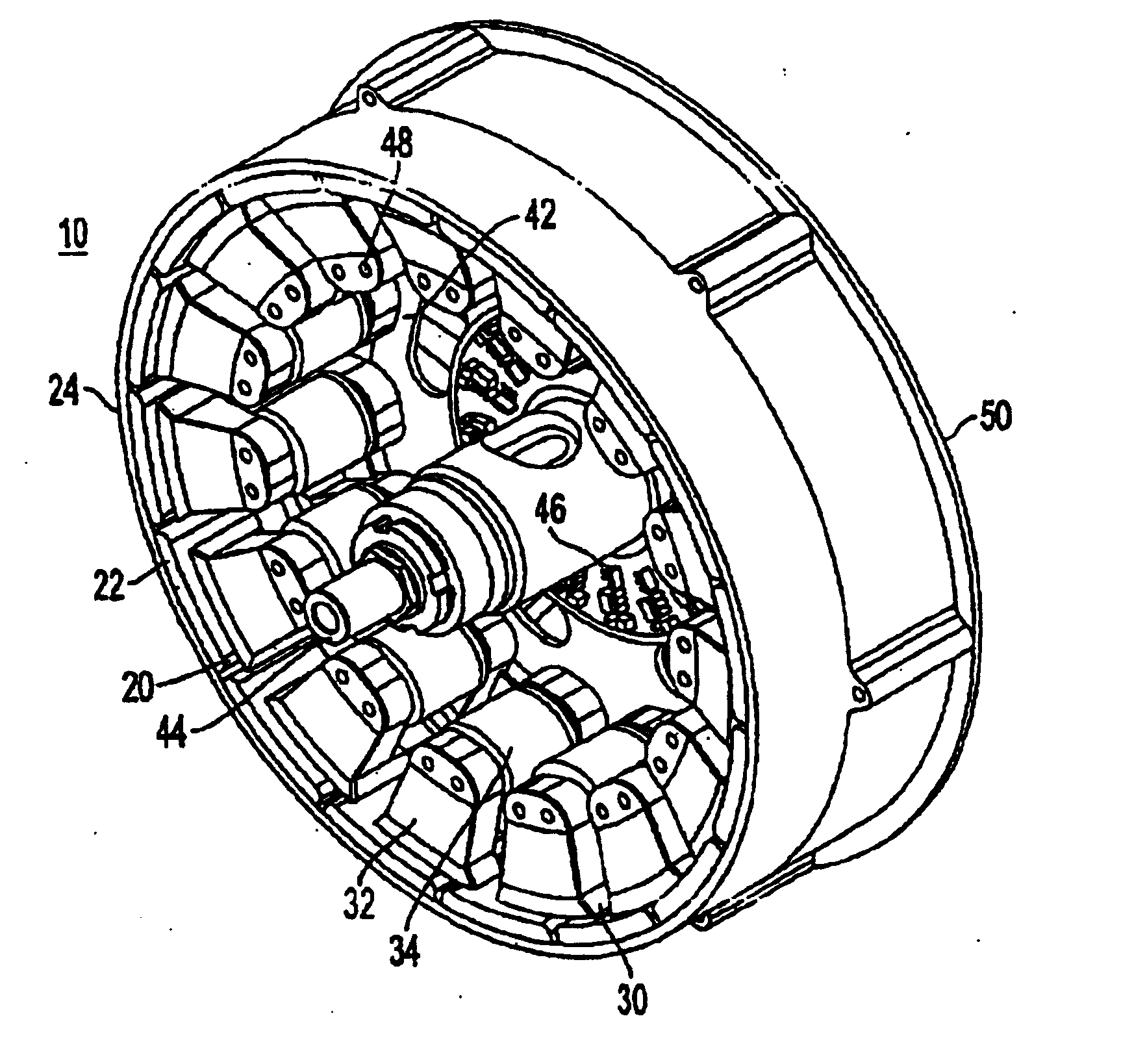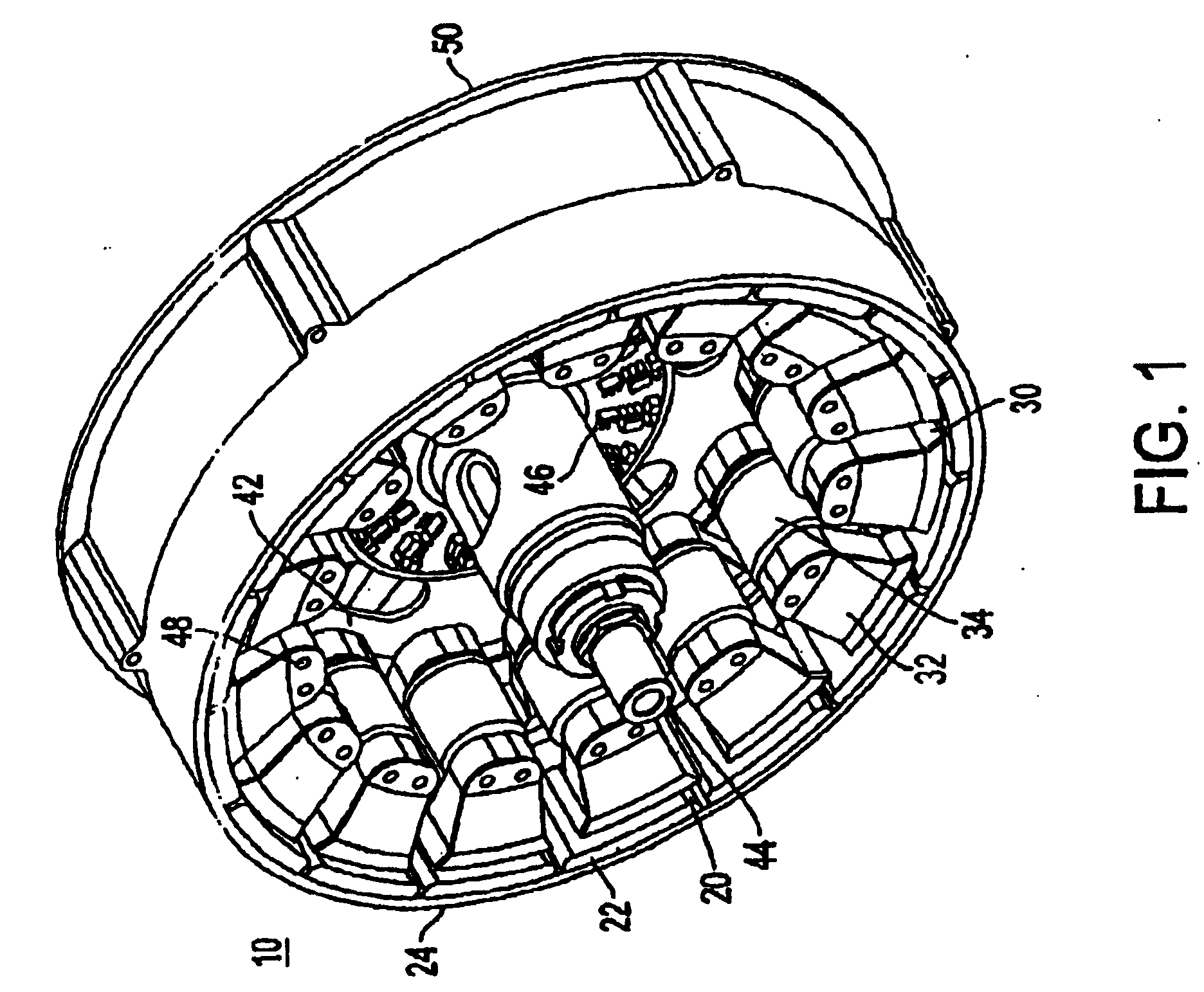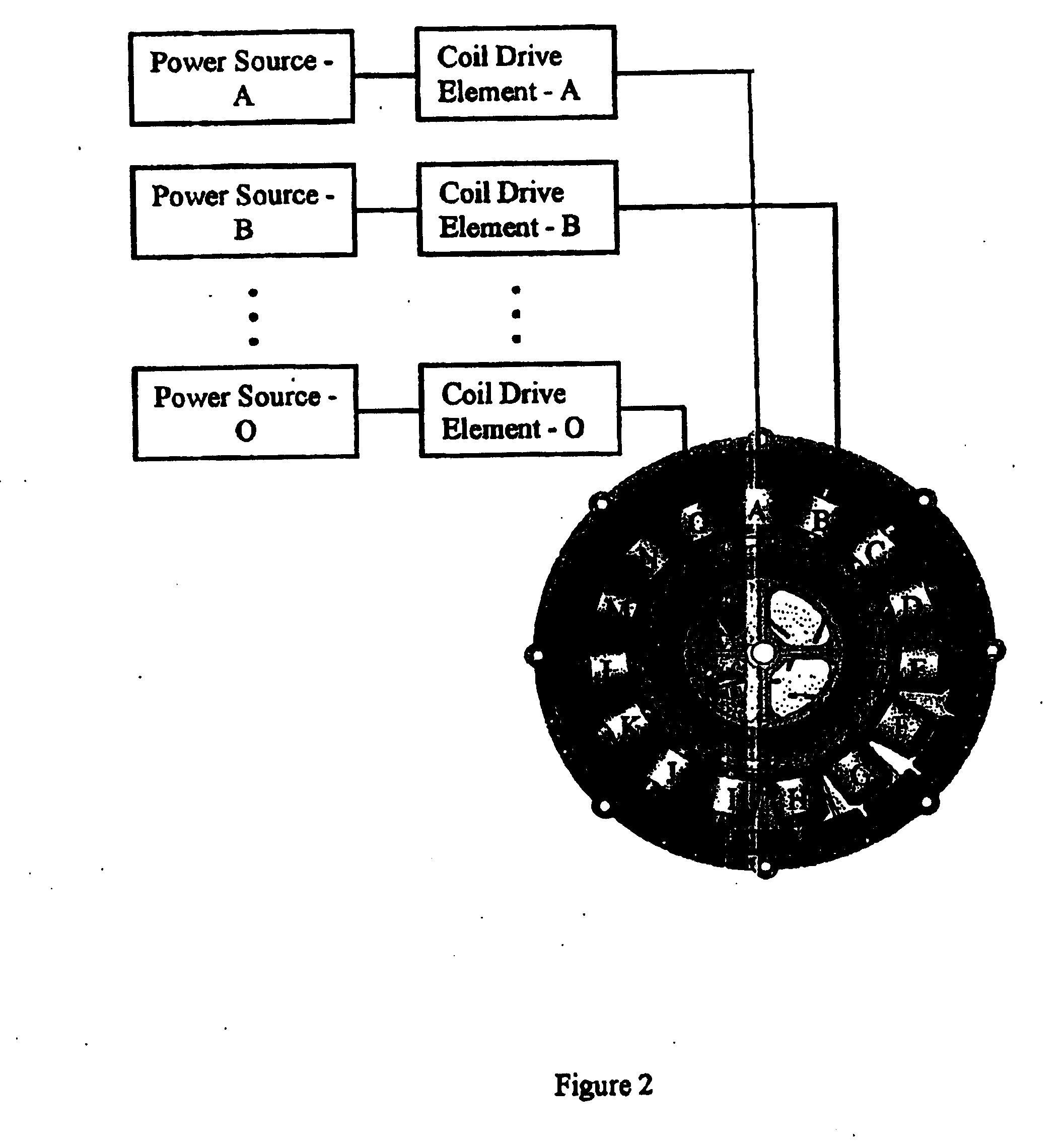Worse, higher currents quickly lead to lower efficiency, since
heat losses due to the resistance of the
system increase exponentially.
While it is known that higher voltages (i.e., voltages above 50 volts) are dangerous to humans, most stationary motors use higher voltages.
Dangerously high voltages are used because most stationary motors are usually operated in a relatively stable environment where the higher voltage is thought to
pose relatively little danger.
Electric motors used in mobile applications, such as cars,
pose a different problem.
Or the driver, who typically may not be too safety conscious, may get a rude shock when probing under the seat for some lost loose change.
At 12 volts, these currents may be shocking, but thet are rarely fatal.
Often, though, the tradeoff required by the “power=voltage×current” equation presents problems.
Using a high
system voltage (often 200 to 350 volts) presents a safety problem.
Or a motor designer may be forced to high voltages by the need to use low currents to meet cost, space or weight constraints.
That means a high-voltage (often 200 to 350 volts) power source, which may not be readily available.
That increases the size of the battery or fuel
cell stack, complicates
energy management, and reduces efficiency.
The high voltages required by high-power electric motors present a particular problem with
electric cars.
That has caused the average gas mileage of the cars on American roads to decrease in recent years.
Making a fuel-efficient V6 or V8 engine providing two or three hundred
horsepower is much harder.
But these are smaller cars.
These voltages present a significant safety problem.
If there is a low-resistance connection between a person, the
electricity source, and the ground, at these voltages enough current may flow through his or her vital organs to cause death.
That makes keeping an intrinsically safe voltage level even more difficult in an AC
system.
However, these measures also add to the cost and complexity of the vehicle.
Moreover, in
spite of all these measures, accidents still happen.
Any short-circuit which does occur in an accident may result in a major release of this energy, and a consequent explosion and fire.
Unfortunately, though, no existing
electric motor system provides the
higher power needed to move an automobile while keeping the system voltage at 50 volts or less.
However, safety and other considerations can limit the voltages used.
Even limiting the voltages to those levels causes great safety concerns.
Other considerations may limit the system voltage of an
electric motor.
For example, cost may be an issue in some applications.
Despite MOSFETs' advantages, they have been considered inappropriate for high-voltage electric motors used in
electric cars.
The
MOSFET's relatively
low voltage capability and the need to operate a number in parallel to obtain the current output required for
electric vehicle operation often made them a high-cost option.
The general
consensus has been that MOSFETs cannot effectively meet the combination of low “on” resistance and high-voltage capability required for electric car motors.
But at voltages where MOSFETs can be used, IGBTs provide poorer performance and at an increased cost.
Although the difference in cost can be large, IGBTs and other high-cost, high-voltage
power electronics have been used in almost all electric car motor systems.
High voltages can also be more difficult to deliver, particularly from batteries or
fuel cells.
The height of the typical fuel cell stack makes it difficult to find a place for it in an
electric vehicle.
But with a high system voltage, that may be impossible.
Connectors certainly will need redesigning, because disconnecting loads from a running system, which causes only brief sparks at 12 volts, can cause sustained arcing at 42 volts, and so erode contacts and even start fires.
Heat also becomes a bigger problem with high voltages and high currents.
Any motor loses some power due to resistance in the wire windings.
The long lengths of wire in an electric motor can make these losses a significant factor.
Increasing the gauge of the winding wire is one way to minimize these losses, but only with substantial increases in cost, size, and weight.
Higher currents can also be a big drag on efficiency.
Motor designers are familiar with the disadvantages of using high currents in a motor.
Making a motor that requires a large number of turns of large gauge wire can be a
nightmare.
So
high current requires a large and heavy electric motor and heavy wiring, switching and contacts to generate the desired power.
Apart from the size and weight issues this brings, the cost and manufacturability of a
high current motor are often impracticably high.
For all the reasons discussed above, the controls (including power
electronics) for a high-power electric car motor make up a large, complex, heavy, expensive system.
They generate lots of heat, requiring heat sinks and cooling.
All of this increases cost and reduces efficiency.
Fourth, low-system voltage reduces battery fade and losses in power
electronics.
This results in lighter wiring, switches and contacts.
There may be some disadvantages to this distributed architecture, as well.
Because of the distributed design of the low-voltage motor, motor and controller life should not be affected, and because the low system voltage may require higher currents to be used in this distributed design than in a traditional design, battery issues may continue to be a problem.
These voltages are dangerous to humans, and these currents require heavy-duty power
electronics (likely IGBTs instead of MOSFETs) and large wires.
Such a design, however, would require a large and heavy electric motor and heavy wiring, switching and contacts to accommodate the very high currents (perhaps 1,500 amps) that would be required.
It is simply impractical.
 Login to View More
Login to View More  Login to View More
Login to View More 


